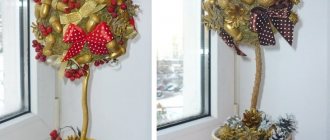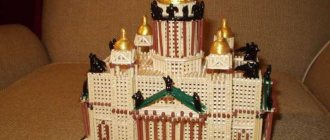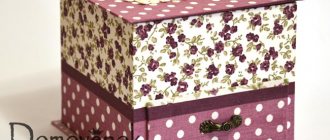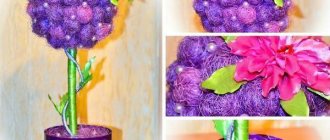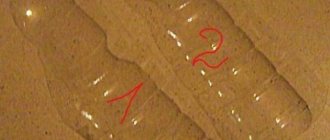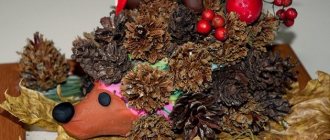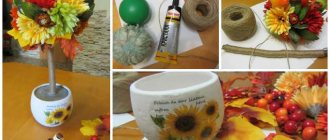A little history
The history of homemade metal products goes back more than a thousand years. Gradually, such crafts turned into one of the areas of artistic art. And from the beginning of the 11th century they became an obligatory attribute of European architecture.
In our time, their popularity has not faded. Despite the high cost, beautiful handmade metal crafts remain loved by both interior designers and ordinary people, as they are a great way to add uniqueness and originality to a setting.
Note! Even more modern ideas and solutions are presented on the website https://podelkisamodelki.ru
Extinguishing
For hardening, you can use charred leather mixed with salt and plain flour in the ratio of 6:4:3 by weight respectively. Then combine this mixture with water and mix thoroughly, wrap it around a knife. Once the coating has become hard, carbon must be released into the workpiece. To do this, place the knife to heat for 12-15 minutes so that the coating burns. Quench the remaining part in water.
"Dad is offended." Agata Muceniece about her relationship with Priluchny after the divorce
Women's jeans: before you buy them, you need to pay attention to one detail
A student at the Vietnam Police Academy shared how she takes care of her facial skin.
Techniques for creating decorative items from metal
Hand-made metal products will add attractiveness to any type of structure, from cornices to furniture. As you can see in the photo of metal crafts, there are the following techniques for their manufacture:
- casting;
- difovka;
- forging;
- bending;
- stamping;
- cutting;
- filigree;
- coinage.
The last six are the most common. The uniqueness of metal as a material lies in the fact that it can be used to create a wide variety of compositions for both interiors and exteriors.
You will be ready to realize your idea of making a creative and interesting little thing only after you choose an idea and instructions for making a craft.
Safety precautions when carrying out welding work
Welding work should be carried out taking into account safety precautions, since this is a rather dangerous type of activity, both the welding itself and a number of preparatory works, which include cutting, milling, securing workpieces, and so on. The following points pose a danger:
- electric shock;
- damage to the organs of vision by ultraviolet radiation, which comes quite intensely from the lit arc;
- possible contact with scale, sparks and other foreign objects in the eyes;
- penetration of toxic fumes into the lungs;
- if there are open areas of the body, they can receive burns from molten metal or sparks;
- When using balloon welding, you should protect yourself from a possible explosion of the balloon.
It is best to protect your eyes from radiation using a special mask or safety glasses. There are relatively cheap masks on sale with darkened glass, through which the arc is very clearly visible, but at the same time this glass will absorb ultraviolet radiation well, thereby preventing damage to the organs of vision.
It is much more convenient to use a chameleon type mask, since it will turn dark immediately after the arc is lit. This can be achieved due to the presence of special automation and sensors that instantly respond to the occurrence of a strong source of ultraviolet radiation. Many craftsmen use welding glasses at home, as they perfectly protect the eyes from radiation, but significantly less restrict movement, and also allow you to make the viewing angle much larger, which is important when carrying out welding work. With the right approach to welding, you will be able to obtain a high-quality connection without any harm to your own health.
Rat made of metal
A figurine of a rat would be a good option. To create it you will need the following materials:
- steel rods with a diameter of 4, 6, 10, 12, 14 mm;
- metal sheet 2 mm thick;
- wire;
- bearings – 3 pcs.
You should also prepare a grinder, drill, metal scissors, electric welding, and a grinding circle.
Here's a quick step-by-step guide:
- We make a head and a torso from two pieces of pipe. To do this, we cut out the required parts along the entire diameter of the pipes and weld them.
- We clean the elements with a grinder with a circle;
- We weld the rat's head to the body.
- We make sketches of the ears and paws and transfer them to a sheet of metal. Cut out the resulting blanks.
- We roll the paw blanks into a funnel, scald them and clean the seams.
- We collect the rat.
- We make paws-brushes from twigs. To do this, we connect a 4 mm rod with a 10 mm rod by welding, and the lower 6 mm with a 12 mm rod. Then insert into funnels and scald.
- We make a tail from a 14 mm rod and attach it to the rat.
- We make a hole for the eyes, insert bearings into them and weld them. The third bearing should be used to create the spout.
- We drill holes for the mustache and insert the wire into them.
- We clean everything with a grinder and make fur. To do this, it is necessary to apply longitudinal welds close to each other.
- We coat the finished rat with varnish.
Wire crafts
You can create original, varied crafts from steel wire. For example, children will be interested in wire spiders. The insect body is made by winding wire onto a cylinder with a diameter of 10-15 mm. The legs are also made by winding, but small diameter cylinders are used, for example, wire with a diameter of 5-6 mm. They bend in a characteristic shape. The parts are connected. Large eyes and nose are attached.
You can also make complex, openwork figures. First, a rigid frame is made from the thickest wire. Using openwork weaving, it is covered with wire of a smaller diameter, which provides volume and decorativeness to the craft. The bird's wings can be edged with twisted wire. Curls and other embellishments add grace. The wires are connected using soldering.
Panel "Fish"
Let's look at one of the popular children's metal crafts with manufacturing - the "Fish" panel. To create it you need to prepare wire of different thicknesses, beads, beads, paper, scissors and a pencil.
Here is a small master class:
- Draw a sketch of a fish.
- Accordingly, we make a wire frame with curves.
- We construct jumpers from thin wire.
- We fill the body of the fish with beads and beads. To do this, we attach a wire to the curves on the frame and string decorative material onto it. Then we fix it on the back side of the panel. Beads are used to highlight large scales and eyes.
- In this way we gradually fill the entire fish. Its color depends on the color of the beads.
The finished image can be used to decorate a corridor wall or a child’s room. This panel is a wonderful gift for a fisherman.
In conclusion, we note that making metal crafts looks complicated only at first glance. In fact, anyone can make them. Therefore, do not be afraid - try, experiment. And perhaps a real work of art will come out of your hands.
Welding to form the main knife blank
Once the basic tack welding is complete and the basic shape of the knife is visible, the cleaning process begins. To do this, an etching agent is used - a gel that is used to remove black oxides and slag from stainless steel, and brightens the welds. Therefore, before starting welding, check that there is no slag left. You also need to clean the weld with a wire brush and jackhammer to ensure there is no slag left behind, otherwise it could get caught between the layers of the weld. Welding can begin. However, after welding is completed on one side, there are a lot of burn deposits on the opposite side, and there are still areas where slag is stuck, so you need to clean the entire workpiece again with an etching agent. Then, using diamond burs and carbide burrs, you need to knock out the slag again. Once everything is clean again, you can start welding on the other side.
A Brazilian travels 36 km by bike every day to take his loved one home.
Smooth and fresh skin: dermaplaning, or why a woman needs to shave her face
Why French children behave well: eight ways to raise them
Treatment
To make a resin knife handle, you need to mix polyester resin with 3 different pearls and pour it into a mold to create a handle block. Once you have this handle block, you need to mark the location of the holes for the handle and then drill the holes and fit them exactly. Then you can form a handle. First draw the layout on the handle block and then grind the material on the drill press. Once the rough shape is achieved, insert the handle into the knife and then make the fine shape using files and a drum sander, finishing with 1000 grit sandpaper and making it completely smooth.
If there is little snow, there will be no harvest: December 16 is Ivan the Silent Day
It’s good to wash often: myths about shampoo and hair care that only harm
The money tree pleases with lush flowering: my secret is in caring for the leaves
